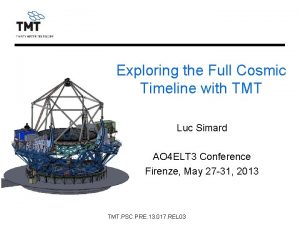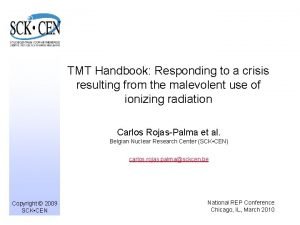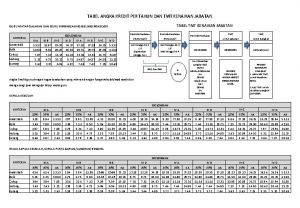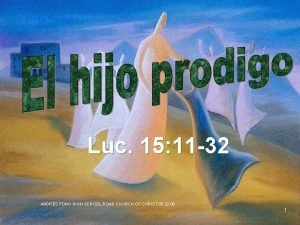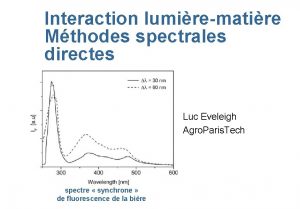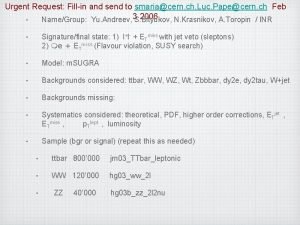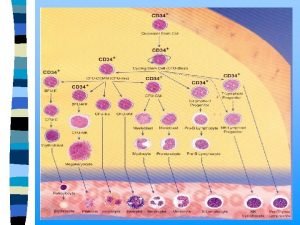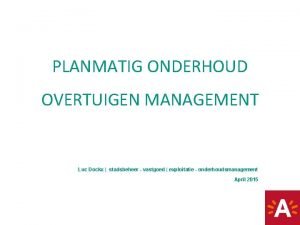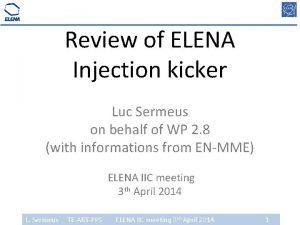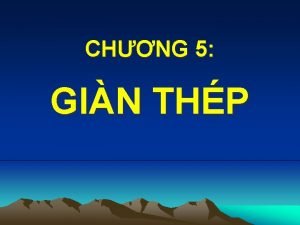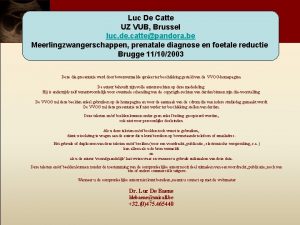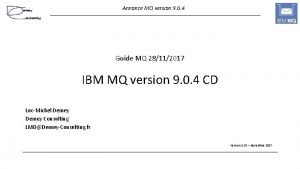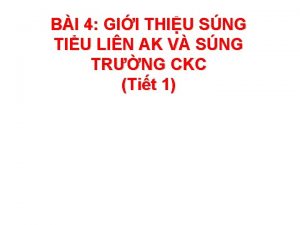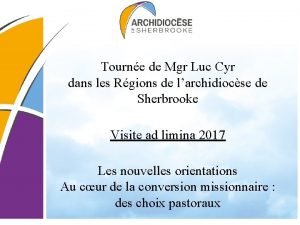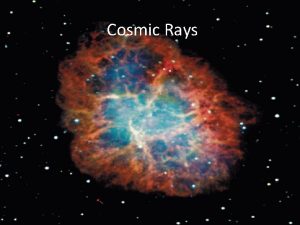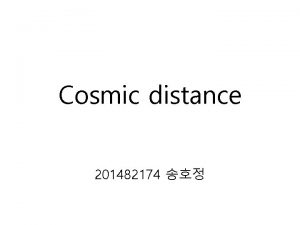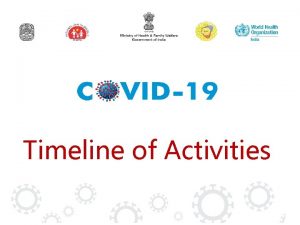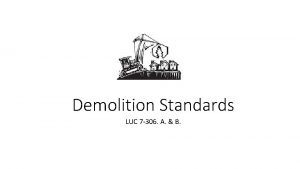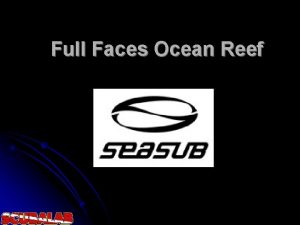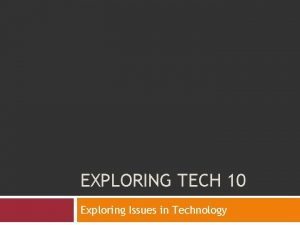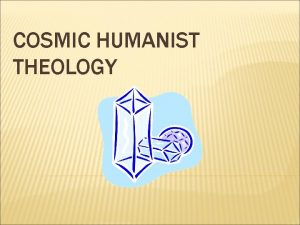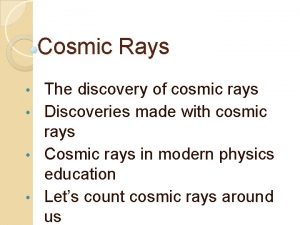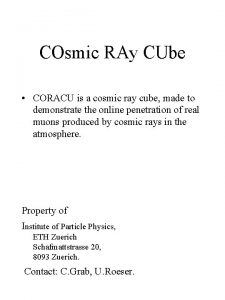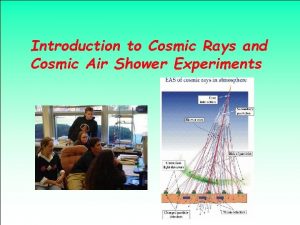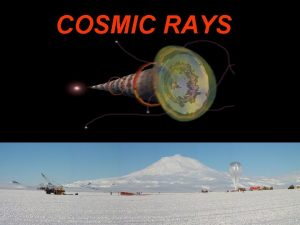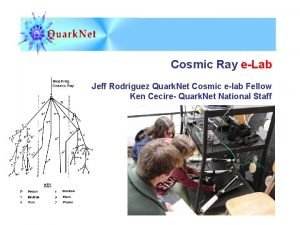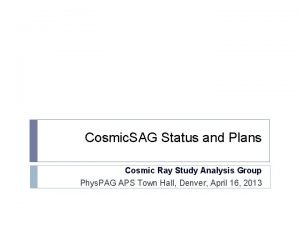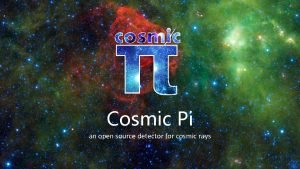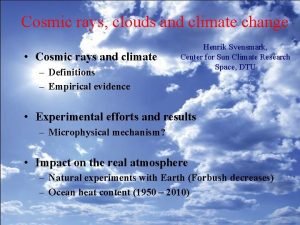Exploring the Full Cosmic Timeline with TMT Luc












































- Slides: 44

Exploring the Full Cosmic Timeline with TMT Luc Simard AO 4 ELT 3 Conference Firenze, May 27 -31, 2013 TMT. PSC. PRE. 13. 017. REL 03

TMT Cosmic Timeline 13. 3 Billion Years TMT. PSC. PRE. 13. 017. REL 03

Working at the Diffraction Limit TMT. PSC. PRE. 13. 017. REL 03 3

The Importance of Adaptive Optics Seeing-limited observations and observations of resolved sources Background-limited AO observations of unresolved sources High-contrast AO observations of unresolved sources 4 TMT. PSC. PRE. 13. 017. REL 03

TMT as an Agile Telescope: Catching The “Unknowns” TMT target acquisition time requirement is 5 minutes (i. e. , 0. 0034 day) Tightly sequenced observations will be key Source: Figure 8. 6, LSST Science Book TMT. PSC. PRE. 13. 017. REL 03 5

From Science to Subsystems Transients - GRBs/ supernovae/tidal flares/? Fast system response time NFIRAOS fast switching science fold mirror Articulated M 3 for fast instrument switching Fast slewing and acquisition TMT. PSC. PRE. 13. 017. REL 03 6

Summary of TMT Science Objectives and Capabilities TMT. PSC. PRE. 13. 017. REL 03 7

TMT Planned Instrument Suite TMT. PSC. PRE. 13. 017. REL 03 8

An ELT Instrumentation “Equivalence Table” Type of Instrument GMT TMT E-ELT Near-IR, AO-assisted Imager + IFU GMTIFS IRIS HARMONI Wide-Field, Optical Multi-Object Spectrometer GMACS MOBIE OPTIMOS Near-IR Multislit Spectrometer NIRMOS IRMS Deployable, Multi-IFU Imaging Spectrometer IRMOS EAGLE Mid-IR, AO-assisted Echelle Spectrometer MIRES METIS TIGER PFI EPICS GMTNIRS NIRES SIMPLE G-CLEF HROS CODEX WIRC MICADO High-Contrast Exoplanet Imager Near-IR, AO-assisted Echelle Spectrometer High-Resolution Optical Spectrometer “Wide”-Field AO Imager TMT. PSC. PRE. 13. 017. REL 03 9

The Milky Way Halo According to Cold Dark Matter Dark matter particles and NOT stars! TMT. PSC. PRE. 13. 017. REL 03 10

Low-Mass CDM with Astrometric Anomalies in Gravitational Lenses TMT will be able to detect astrometric anomalies in gravitational lenses from dark CDM haloes with masses as small as 107 solar masses – a factor of ten improvement This will yield better constraints on the nature of the dark matter particle TMT. PSC. PRE. 13. 017. REL 03 MCAO Vegetti et al. 2010 11

Towards Resolving the Missing Satellites Problem The TMT mass limit of 107 M is where the discrepancy is the largest! Strigari et al. 2007 TMT. PSC. PRE. 13. 017. REL 03 12

Inter-Galactic Medium Tomography: Now SL (Simulation: M. Norman, UCSD) TMT. PSC. PRE. 13. 017. REL 03 13

Inter-Galactic Medium Tomography: TMT SL (Simulation: M. Norman, UCSD) TMT. PSC. PRE. 13. 017. REL 03 14

Inter-Galactic Medium Tomography: TMT SL It will be possible to probe individual galaxy haloes with multiple sightlines TMT is a wide-field telescope when applied to the high redshift Universe: 20’ field of view is equivalent to 3. 4 degrees at the redshift of SDSS (Simulation: M. Norman, UCSD) TMT. PSC. PRE. 13. 017. REL 03 15

The First Luminous Objects TMT should detect the first luminous objects - and will study the physics of objects found with JWST: Detection of He II emission would confirm the primordial nature of these objects. With TMT, we will be able to study the flux distribution of sources, and the size and topology of the ionization region. This will help us understand how reionization developed. TMT. PSC. PRE. 13. 017. REL 03 MOAO Schaerer 2002 16

Synergies I. First Light and Re-ionization Penetrating the Early Universe with ionized bubbles Source: IRMOS Caltech Feasibility Study JWST: Detection of sources TMT: (1) Source spectroscopy with IRIS/IRMS and (2) Mapping topology of bubbles around JWST detections with IRIS/IRMS or IRMOS deployable IFUs ALMA: Imaging of dust continuum up to z = 10 for complete baryon inventory TMT. PSC. PRE. 13. 017. REL 03 17

High-Redshift Star Formation TMT. PSC. PRE. 13. 017. REL 03 MOAO 18

Synergies II. SKA Spectroscopic limits (Padovani 2011) The “Square Kilometer Array” will probe the so-called Dark Ages It will also survey sources at the microjansky and nanojansky levels Expected to be optically very faint It will be possible with ELTs+SKA to study star formation rates and feedback from active galactic nuclei in normal galaxies out to z =6 TMT. PSC. PRE. 13. 017. REL 03 19

Physics of Galaxy Formation MOAO TMT will use adaptive optics to map the physical z=0 state of galaxies over the redshift range where the bulk of galaxy assembly occurs: Star formation rate Metallicity maps z = 2. 5 Extinction maps Dynamical Masses Gas kinematics Synergy with ALMA: Molecular emission z = 5. 5 TMT IRMOS-UFHIA team TMT. PSC. PRE. 13. 017. REL 03 20

Physics of Galaxy Formation MOAO TMT will use adaptive optics to map the physical z=0 state of galaxies over the redshift range where the bulk of galaxy assembly occurs: Star formation rate Metallicity z = 2. 5 at z ~ 4 will be as TMTmaps observations Extinction goodmaps as current observations at z ~ 1 Dynamical Masses Gas kinematics Synergy with ALMA: Molecular emission z = 5. 5 TMT IRMOS-UFHIA team TMT. PSC. PRE. 13. 017. REL 03 21

Merging galaxies often hidden behind gas and dust forming stars – need mid-IR to penetrate extinction High spatial resolution separates black hole region from host galaxy contamination TMT/MIRES will put JWST observations in context as done with Spitzer and today’s 8 m telescopes – At z=0. 5, JWST resolution = 1. 5 kpc and TMT = 330 pc TMT. PSC. PRE. 13. 017. REL 03 11 22

Merging galaxies often hidden behind gas and dust forming stars – need mid-IR to penetrate extinction High spatial resolution separates black hole region from host galaxy contamination TMT/MIRES will put JWST observations in context as done with Spitzer and today’s 8 m telescopes – At z=0. 5, JWST resolution = 1. 5 kpc and TMT = 330 pc TMT. PSC. PRE. 13. 017. REL 03 MIRAO 23

Resolved Stellar Populations in Virgo Cluster galaxies Requires: • High Strehl • PSF Uniformity • PSF Stability • Relatively large Fo. V MCAO ! A 5ʹʹ x 10ʹʹ field in a Virgo Cluster galaxy spheroid observed with an 8 m telescope (left) and TMT (right) at the same Strehl ratio (S=0. 6) and an exposure time of 3 hours. Only the brightest Asymptotic Giant Branch (AGB) stars are visible with an 8 -m telescope whereas TMT will probe down the Red Giant Branch (RGB) TMT. PSC. PRE. 13. 017. REL 03 24

Black holes and Active Galactic Nuclei TMT will determine black hole masses over a wide range of galaxy types, masses and redshifts: It can resolve the region of influence of a 109 M BH to z ~ 0. 4 using adaptive optics. Key questions: When did the first supermassive BHs form and feed? How do BH properties and growth rate depend on the environment? How do BHs evolve dynamically? MCAO CFA Redshift Survey galaxies TMT will expand by a factor of 1000 the number of galaxies where 25 TMT. PSC. PRE. 13. 017. REL 03 direct black hole mass measurements can be performed

Galactic Center MCAO Mapping the orbits of stars at the Galactic Center with current Keck and firstlight TMT AO systems. Area shown is 0ʹʹ. 8 x 0ʹʹ. 8 (0. 027 x 0. 027 pc) centered on Milky Way supermassive black hole. Wavelength is 2. 1 µm. TMT. PSC. PRE. 13. 017. REL 03 26

Galactic Center with the IRIS Imager K-band t = 20 s MCAO 100, 000 stars down to K = 24 Courtesy: L. Meyer (UCLA) 17ʹʹ TMT. PSC. PRE. 13. 017. REL 03 27

Substructures in Protoplanetary Disks MIRAO TMT will be able to image protoplanetary disks and detect features produced by planets with mid-infrared adaptive optics: TMT will have 5 x the resolution of JWST. Simulation of Solar System protoplanetary disk (Liou & Zook 1999) TMT. PSC. PRE. 13. 017. REL 03 28

Synergies III. Planet Formation TMT PFI: 106 @ 30 mas IWA (Taurus Jovians) 108 @ 50 mas IWA (Reflected light Jovians) Figure 31 “Science with ALMA” Document Simulation of a protoplanetary system with a tidal gap created by a Jupiter-like planet at 7 AU from its central star as observed by ALMA TMT’s Planet Formation Instrument (PFI) will allow detection of the planets themselves that are responsible for the gaps and thus enable measurements of mass, accretion rate and orbital motion. TMT. PSC. PRE. 13. 017. REL 03 29

Planet Formation and The Building Blocks of Life MIRAO Diffraction-limited, high spectral resolution observations in the mid-IR with TMT will probe complex molecules in protoplanetary disks where terrestrial planets are expected to reside TMT. PSC. PRE. 13. 017. REL 03

Synergies IV. Proto-Star Formation High-velocity outflowing gas in CO towards protostar SVS 13 (Keck/NIRSPEC) TMT/MIRES will measure warm, dense molecular gas to probe the base of outflows in a large number of low-mass protostars Low-resolution Spitzer spectrum shows exceptionally strong molecular absorption. HCN and CO suggests gas originates in an outflow TMT/MIRES will measure molecular abundances to determine the launch point of the wind 31 TMT. PSC. PRE. 13. 017. REL 03 31

Direct Imaging of Mature Exoplanets Ex. AO 32 TMT. PSC. PRE. 13. 017. REL 03 32

Direct Imaging of Mature Exoplanets Ex. AO Observing mature planets in reflected light will tell us how many planetary systems actually share the same “architecture” as our own Solar System. 33 TMT. PSC. PRE. 13. 017. REL 03 33

Synergies V. TESS “Transiting Exoplanet Survey Satellite” Survey area 400 times larger than Kepler’s 2. 5 million of the closest and brightest stars (G, K types) 2, 700 new planets including several hundred Earth-sized ones Planned launch: 2017 TMT. PSC. PRE. 13. 017. REL 03 34

Geological Mapping of Asteroids Keck AO Zellner et al. 2005 MCAO Vesta Binzel et al. 1997 TMT. PSC. PRE. 13. 017. REL 03 35

Geological Mapping of Asteroids Keck AO Zellner et al. 2005 TMT can resolve the surface of over 800 Main Belt asteroids A MB asteroid will typically take ~2 hours to tumble across the NFIRAOS field of view Vesta Binzel et al. 1997 TMT. PSC. PRE. 13. 017. REL 03 36

Observing Io with AO on TMT Keck/AO+NIRC 2 Keck/NGAO MCAO TMT/AO+IRIS Simulations of Io Jupiter-facing hemisphere in H band (Courtesy of Franck Marchis) TMT resolution at 1µm is 7 mas = 25 km at 5 AU (Jupiter) (0. 035 AU at 5 pc, nearby stars) TMT. PSC. PRE. 13. 017. REL 03 37

Observing Io with AO on TMT MCAO And: Methane rain fall on Titan The geysers of Enceladus Nitrogen geysers blowing in the wind on Triton … Keck/AO+NIRC 2 Keck/NGAO TMT/AO+IRIS Simulations of Io Jupiter-facing hemisphere in H band (Courtesy of Franck Marchis) TMT resolution at 1µm is 7 mas = 25 km at 5 AU (Jupiter) (0. 035 AU at 5 pc, nearby stars) TMT. PSC. PRE. 13. 017. REL 03 38

Surface Mapping of Kuiper Belt Objects MCAO Outstanding Questions: • Cryovolcanism • Bulk density and interior structure of the most primitive planetesimals F. Marchis (UC Berkeley/SETI) TMT. PSC. PRE. 13. 017. REL 03 39

Synergies VI. Solar System Physics and Chemistry of Cometary Atmospheres CO(2 -1) emission and dust continuum from Comet Hale-Bopp at 1’’ resolution with IRAM Submm+optical = nucleus albedo and size Detection of parent volatiles in Comet Lee (C/1999 H 1) at R=20, 000. TMT/NIRES will allow diffraction-limited observations at R=100, 000 over the range 4. 5 - 28 µm (Figure 40 - “Science with ALMA” Document) Look for “chemical families” as probes of the Oort Cloud TMT. PSC. PRE. 13. 017. REL 03 40

Strong Overlap Between Sci and Instrumentation TMT. PSC. PRE. 13. 017. REL 03

Synergies VII. Space/IR and ALMA (TMT capabilities are shown in red) TMT/MIRES will have comparable spectral line sensitivity (NELF) to infrared space missions with a much higher spectral resolution The angular resolution of TMT instruments nicely complements that of JWST and ALMA TMT is a “near IR ALMA”! TMT. PSC. PRE. 13. 017. REL 03 42

Summary TMT science programs span the full cosmic timeline: From the “Dark Sector” and First Light Including our own Solar System! TMT has a powerful suite of planned science instruments and AO systems that will make the Observatory a worldclass, next-generation facility Strong synergies with ALMA, JWST, SKA, TESS and the time-domain (LSST, PAN-STARRS, …) Newly-established “International Science Development Teams” will now continue the work on TMT science TMT. PSC. PRE. 13. 017. REL 03 43

Acknowledgments The TMT Project gratefully acknowledges the support of the TMT collaborating institutions. They are the Association of Canadian Universities for Research in Astronomy (ACURA), the California Institute of Technology, the University of California, the National Astronomical Observatory of Japan, the National Astronomical Observatories of China and their consortium partners, and the Department of Science and Technology of India and their supported institutes. This work was supported as well by the Gordon and Betty Moore Foundation, the Canada Foundation for Innovation, the Ontario Ministry of Research and Innovation, the National Research Council of Canada, the Natural Sciences and Engineering Research Council of Canada, the British Columbia Knowledge Development Fund, the Association of Universities for Research in Astronomy (AURA) and the U. S. National Science Foundation. TMT. PSC. PRE. 13. 017. REL 03 44
 Tmt timeline
Tmt timeline Các châu lục và đại dương trên thế giới
Các châu lục và đại dương trên thế giới Các châu lục và đại dương trên thế giới
Các châu lục và đại dương trên thế giới Tmt 20
Tmt 20 Apa itu tmt fasyankes
Apa itu tmt fasyankes Tmt handbook
Tmt handbook Tmt 20
Tmt 20 Tabel angka kredit kenaikan pangkat guru
Tabel angka kredit kenaikan pangkat guru Luc 21:20
Luc 21:20 Luc 15 11-32
Luc 15 11-32 Luc renneboog
Luc renneboog Indirect object pronouns (continued)
Indirect object pronouns (continued) Luc eveleigh
Luc eveleigh Gonococcal vs nongonococcal arthritis
Gonococcal vs nongonococcal arthritis Luc pape cern
Luc pape cern Thính lực đồ
Thính lực đồ Bộ phận nào cấu tạo nên hạt grana
Bộ phận nào cấu tạo nên hạt grana Tính áp lực
Tính áp lực Luc billot
Luc billot Komórki peroksydazo ujemne luc
Komórki peroksydazo ujemne luc Conditiestaatmeting
Conditiestaatmeting Luc sermeus
Luc sermeus Luc zwartjes
Luc zwartjes Luc 4 1-13
Luc 4 1-13 Thanh cánh thượng thanh cánh hạ
Thanh cánh thượng thanh cánh hạ Luc de catte
Luc de catte Luc zoom
Luc zoom Diễn tả bằng lời các yếu tố của lực
Diễn tả bằng lời các yếu tố của lực Vaccine sống giảm độc lực
Vaccine sống giảm độc lực Luc montagnier
Luc montagnier Luc demey
Luc demey Luc rauscent
Luc rauscent Thu gọn hệ lực
Thu gọn hệ lực Ghi ch
Ghi ch Lực coriolis
Lực coriolis Tuổi hồng trương quang lục sáng tác nam nào
Tuổi hồng trương quang lục sáng tác nam nào Công thức tính thế năng
Công thức tính thế năng Jean-luc harousseau
Jean-luc harousseau Tu m'as dit zachée
Tu m'as dit zachée Luc selmès
Luc selmès Các bộ phận súng ak
Các bộ phận súng ak Luc 15
Luc 15 Mgr luc cyr
Mgr luc cyr Diễn tả bằng lời các yếu tố của lực
Diễn tả bằng lời các yếu tố của lực Lucas 24 13-35
Lucas 24 13-35
